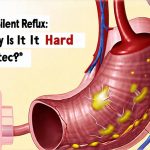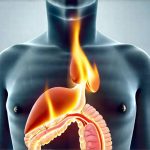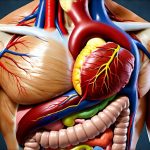Acid reflux is often immediately associated with the burning sensation in your chest we know as heartburn. For many, these two experiences are inextricably linked – one doesn’t exist without the other. But what if you’re experiencing symptoms consistent with acid reflux – a sour taste in your mouth, chronic cough, or difficulty swallowing – without that familiar fiery burn? It can be incredibly confusing and lead to questions about whether it’s even acid reflux at all, or something else entirely. This disconnect between common perception and lived experience makes diagnosing and managing these “silent” cases particularly challenging, leaving individuals unsure where to turn for help and potentially delaying appropriate care.
The truth is, acid reflux can absolutely occur without heartburn. Understanding why requires delving into the complexities of the digestive system and how it sometimes misbehaves. Heartburn isn’t the defining characteristic of acid reflux; it’s merely one possible symptom among many. Acid reflux itself refers to the backflow of stomach acid into the esophagus, irritating its sensitive lining. While this irritation commonly manifests as heartburn, the way individuals perceive and react to that irritation varies greatly, leading to a wide spectrum of symptoms—or even no noticeable discomfort at all beyond subtle effects on other parts of the body. This article will explore these nuances, shedding light on how acid reflux can present without heartburn, what causes it, and how to identify and manage it effectively.
Silent Reflux: Understanding Atypical Presentations
Silent reflux, also known as laryngopharyngeal reflux (LPR), is a subtype of acid reflux where the stomach acid reaches higher up into the esophagus, often reaching the throat and even the sinuses. Unlike typical acid reflux which predominantly causes esophageal irritation leading to heartburn, LPR frequently bypasses the esophagus altogether or causes minimal esophageal discomfort. This means you might not feel that burning sensation in your chest but experience a different set of symptoms that are less directly associated with digestive issues. These can be subtle and easily mistaken for other conditions, making diagnosis difficult.
The reason silent reflux often goes undetected is because the esophagus has fewer nerve endings than some other areas. A small amount of acid may not trigger pain receptors in the same way it would if it were concentrated lower down. Furthermore, the vagus nerve, which plays a crucial role in sensing esophageal discomfort, can become desensitized over time with repeated exposure to acid. This means the body essentially stops registering the irritation as strongly, leading to a lack of typical heartburn symptoms. Think of it like slowly getting used to a loud noise – eventually, you barely notice it anymore.
Importantly, while silent reflux might not cause heartburn, it can still lead to significant health problems if left unaddressed. Chronic exposure to acid in the upper digestive tract can irritate and inflame the vocal cords, sinuses, and even the lungs, leading to a range of symptoms including hoarseness, chronic cough, postnasal drip, difficulty swallowing (dysphagia), and a persistent feeling of something stuck in your throat (globus sensation). These seemingly unrelated symptoms are often the first clues that silent reflux is present. If you suspect food sensitivity could be playing a role, it’s worth investigating further.
Identifying Silent Reflux: Common Symptoms & Clues
Pinpointing silent reflux can be challenging because its symptoms mimic other conditions. It’s not always about what you feel in your chest, but rather where and how the acid is affecting other areas of your body. Here are some common indicators that might suggest silent reflux, even without heartburn:
- Chronic cough: Especially at night or after meals. This is one of the most frequent symptoms.
- Hoarseness: A change in your voice quality, making it raspy or weak.
- Frequent clearing of the throat: A persistent urge to clear your throat, often due to acid irritation.
- Postnasal drip: The sensation of mucus running down the back of your throat.
- Globus sensation: Feeling like something is stuck in your throat, even when nothing is there.
- Sinus infections: Recurring or chronic sinus problems.
- Asthma exacerbation: Worsening asthma symptoms triggered by acid reflux.
- Earaches: Unexplained ear pain or pressure. Perhaps acid reflux cause this discomfort?
It’s important to note that experiencing one of these symptoms doesn’t automatically mean you have silent reflux. However, if several of these symptoms are present consistently and don’t seem to be improving with other treatments, it warrants further investigation. Paying attention to when your symptoms worsen – for example, after eating certain foods or lying down at night – can also provide valuable clues. Consider whether water quality might be exacerbating the issue.
Diagnostic Tools & Approaches
Diagnosing silent reflux often requires a more nuanced approach than diagnosing typical acid reflux. Because heartburn isn’t present, relying on standard diagnostic tests like an endoscopy (visual examination of the esophagus) might not reveal significant findings. The esophagus may appear relatively normal even though acid is causing damage higher up in the digestive tract.
-
pH monitoring: This is considered the gold standard for diagnosing LPR. It involves placing a small probe in your esophagus or throat to measure the amount of acid exposure over a period of time (typically 24 hours). There are different types of pH monitoring:
- Transnasal impedance testing: A tiny sensor is passed through the nose into the esophagus to measure both acid and non-acid reflux events. This is particularly useful for identifying “weakly acidic” reflux, which can be just as damaging as strong acid reflux but may not register on traditional pH monitors.
- Prolonged esophageal pH monitoring: Measures acid exposure over a longer period (48-72 hours) to capture more subtle patterns of reflux.
-
Laryngoscopy: A visual examination of the larynx (voice box) by an otolaryngologist (ENT doctor). This can reveal signs of inflammation or irritation caused by acid reflux.
- Esophageal manometry: Measures the pressure and coordination of muscle contractions in the esophagus, which can help identify problems with esophageal motility that might contribute to reflux.
It’s crucial to work closely with a healthcare professional experienced in diagnosing LPR. They will consider your symptoms, medical history, and results from these tests to determine the best course of action. Self-diagnosis is strongly discouraged, as many other conditions can mimic silent reflux symptoms. You may wonder, can you eat without exacerbating these issues?
Managing Silent Reflux: Lifestyle & Treatment Options
Managing silent reflux often requires a multifaceted approach that combines lifestyle modifications with potential medical interventions. The goal isn’t just to reduce acid production but also to prevent it from reaching the upper digestive tract and causing irritation.
-
Dietary changes:
- Avoid trigger foods: Common triggers include fatty foods, spicy foods, chocolate, caffeine, alcohol, carbonated beverages, and citrus fruits. Keeping a food diary can help identify your personal triggers.
- Eat smaller, more frequent meals: This reduces the amount of pressure on the lower esophageal sphincter (LES), which helps prevent acid reflux.
- Avoid eating close to bedtime: Allow at least 2-3 hours between your last meal and going to bed.
-
Lifestyle adjustments:
- Elevate the head of your bed: Raising the head of your bed by 6-8 inches can help prevent acid from flowing back up into the esophagus while you sleep.
- Maintain a healthy weight: Obesity increases abdominal pressure, which can contribute to reflux.
- Quit smoking: Smoking weakens the LES and increases stomach acid production.
- Avoid tight-fitting clothing: Tight clothes can increase abdominal pressure.
-
Medical treatment: Your doctor may recommend medications to reduce acid production or protect the esophageal lining. These might include:
- Proton pump inhibitors (PPIs): Reduce stomach acid production.
- H2 receptor antagonists: Also reduce stomach acid production, but are generally less potent than PPIs.
- Alginates: Form a protective barrier over the stomach contents to prevent reflux.
It’s important to remember that managing silent reflux is often an ongoing process. It may take time and experimentation to find what works best for you. Regular follow-up with your healthcare provider is essential to monitor your progress and adjust your treatment plan as needed. If dietary changes feel restrictive, can you heal without cutting foods entirely? And finally, remember that water additives could potentially influence these symptoms too.


















